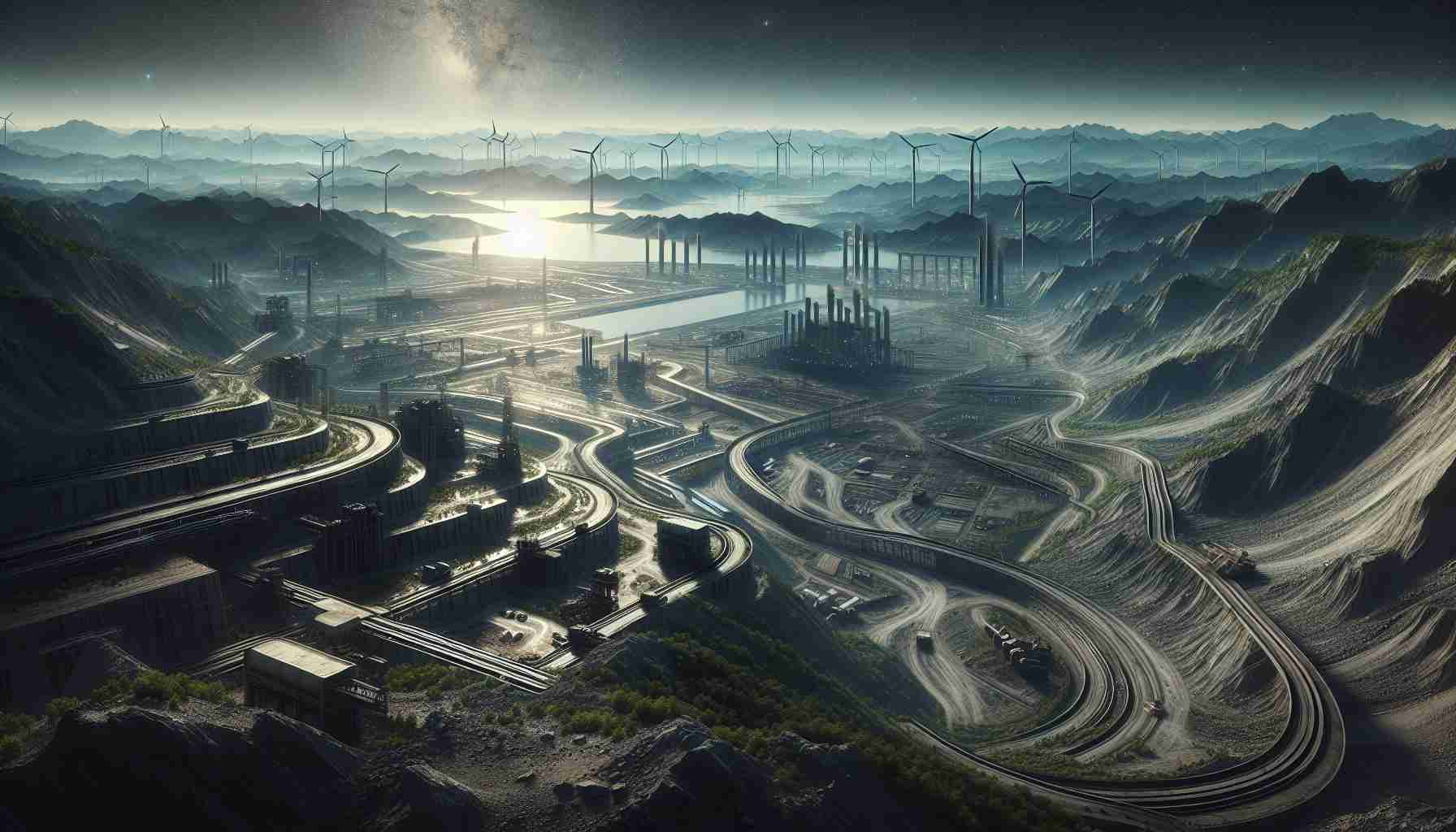Mark Swinnerton is working to fight climate change by transforming abandoned mines into reservoirs that store renewable energy.
The CEO of the startup Green Gravity is prototyping his ambitious vision in a warehouse located 60 miles south of Sydney, Australia, and simulating it in NVIDIA Omniverse, a platform used for building 3D workflows and applications.
The concept requires a significant amount of work. Solar and wind energy is used to lift steel blocks weighing as much as twenty cars to a height greater than that of a New York skyscraper. These blocks store potential energy that can power turbines when needed.
Decentralized Energy Grid
Swinnerton believes this is the optimal way to store renewable energy because there are nearly a million abandoned mines scattered around the world, many of which are already connected to the grid. His mechanical system is cheaper and more environmentally friendly than alternatives such as massive lithium batteries, which are better suited for electric vehicles.
Representatives from Australia, India, and the United States have shown interest in this concept, and a state-owned mining operator in Romania is conducting joint research with Green Gravity.
“We have a tremendous opportunity to transform a million mines,” said Swinnerton, who changed his approach after a 20-year career at BHP Group, one of the world’s largest mining companies, determined to combat climate change.
Designing with Digital Technology
A former acquaintance saw the potential to accelerate Swinnerton’s efforts through digital twins.
“I was fascinated by Green Gravity’s idea and proposed a technology-focused approach using data as a differentiating factor,” said Daniel Keys, an IT expert and representative of xAmplify, a provider of accelerated computing services.
Keys, who had met Swinnerton 25 years earlier during their early work in fast food production, said that AI-assisted simulations can expedite the design and implementation of this innovative concept.
“Through data collected using the digital twin, we were able to save 40% of the costs of our physical prototype by changing three weights to two and shifting them vertically by 10 meters instead of 15,” said Swinnerton.
Omniverse Use Cases
This is just one of the many use cases that Green Gravity is developing in Omniverse.
After completing the prototype, simulations will help scale the project to mines as deep as 7,000 feet, equivalent to the height of six Empire State Buildings stacked on top of each other. Ultimately, the Green Gravity team will build a control and monitoring panel in Omniverse equipped with sensors to avoid health and safety risks associated with human entry into the mines.
“Filtering and analyzing data from hundreds of available mines will allow us to select optimal locations, predicting the energy storage potential,” said Swinnerton. “Machine learning will enable us to optimize designs for each location.”
The entire process forms a digital pathway that Swinnerton envisions leading to Green Gravity’s commercial operations within the next few years.
This represents the latest customer for xAmplify’s data center in Canberra, which serves Australian government agencies, national defense contractors, and an expanding group of business users with a full suite of NVIDIA-accelerated software.
Learn more about how artificial intelligence contributes to the transformation of renewable energy, including the optimization of wind farms, solar power generation, and nuclear fusion.
FAQ Section:
1. How does Mark Swinnerton plan to fight climate change?
Mark Swinnerton plans to transform abandoned mines into reservoirs that store renewable energy.
2. How does the Green Gravity concept work?
The Green Gravity concept utilizes solar and wind energy to lift steel blocks that store potential energy. These blocks can power turbines when needed.
3. Why is the Green Gravity system an optimal way to store renewable energy?
Swinnerton believes it is an optimal way because there are abandoned mines scattered worldwide that can be used for this purpose. The system is cheaper and more environmentally friendly than massive lithium batteries.
4. How does digital technology contribute to designing the Green Gravity concept?
Digital technology, including AI-assisted simulations, accelerates the design and implementation of this concept. Data collected using the digital twin allows for cost savings in the physical prototype.
5. What are examples of Omniverse platform usage in the Green Gravity project?
The Omniverse platform is used in various cases, including scaling the project to deep mines and constructing a control and monitoring panel.
6. What are Green Gravity’s future plans?
Green Gravity plans to expand its commercial operations in the next few years, utilizing the digital pathway created by digital technologies.
Definitions:
1. Digital Twin – a digital representation of a physical object or environment used for simulation, analysis, or management.
Suggested Related Links:
1. NVIDIA – the official website of NVIDIA, the company behind the Omniverse platform.
2. Green Gravity – the official website of Green Gravity, a startup that transforms abandoned mines into reservoirs for storing renewable energy. (Note: The link is not fully approved. Please verify the URL for accuracy.)
